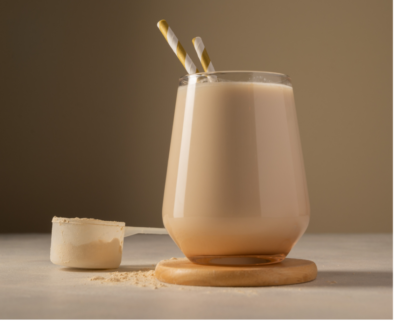Carbohydrates 101
 As their name denotes, carbohydrates are carbon, oxygen, and hydrogen. When we eat carbohydrates, the body breaks them down into glucose for energy for the body and brain. Glucose is stored as glycogen in muscle tissue and in the liver. Excess glycogen is converted to fat for storage. The more muscle you have, the more glycogen you can store, lessening the amount that will be converted to fat. At rest, the body is using mostly fat for energy. The harder you work, the greater the proportion of carbohydrates used for energy. When you work anaerobically, about 85% of maximum heart rate and above, (lifting heavy weights for 1-5 repetitions per set, HIIT, and sprints) you are burning mostly carbohydrates for fuel.
As their name denotes, carbohydrates are carbon, oxygen, and hydrogen. When we eat carbohydrates, the body breaks them down into glucose for energy for the body and brain. Glucose is stored as glycogen in muscle tissue and in the liver. Excess glycogen is converted to fat for storage. The more muscle you have, the more glycogen you can store, lessening the amount that will be converted to fat. At rest, the body is using mostly fat for energy. The harder you work, the greater the proportion of carbohydrates used for energy. When you work anaerobically, about 85% of maximum heart rate and above, (lifting heavy weights for 1-5 repetitions per set, HIIT, and sprints) you are burning mostly carbohydrates for fuel.
Simple vs. Complex Carbohydrates:
Simple sugar are monosaccharides and disaccharides.
- Monosaccharides:
- Glucose (the form the body uses for energy), fructose, galactose (milk), dextrose
- Disaccharides:
- honey (fructose and glucose), lactose (milk), maltose, sucrose (table sugar: 50/50 fructose and glucose)
Complex carbohydrates are polysaccharides found in grains, starchy vegetables, fruit, nuts, and seeds. These provide two types of fiber:
- Insoluble fiber (roughage): helps with regularity, found in the in the peel of fruit and vegetables such as apples, grapes, and cucumbers, and also in vegetables like cabbage and lettuce
- Soluble fiber: helps lower LDL (“bad” cholesterol), promotes heart health, found in grains, vegetables, fruit, beans, legumes, nuts, and seeds
A closer look at fructose:
Fructose is found in fruit, honey, table sugar, and High Fructose Corn Syrup, which is 55% fructose (or higher) and 45% glucose. Fructose must be converted to glucose by the liver. Consume too much fructose and the liver gets overloaded. This isn’t a concern if you’re eating fruit. The problem lies in the high concentration of fructose in High Fructose Corn Syrup. You’d have to eat 5 bananas or 9 cups of strawberries or 3 apples to get the same amount of fructose in one 20oz soda!
When the liver gets overloaded, it will convert fructose directly to fat and send it into the blood stream as triglycerides. A diet high in HFCS from processed foods, sugary drinks, and soda leads to increased risk for gout, obesity, heart disease, non-alcoholic fatty liver disease, insulin resistance, elevated blood triglycerides, elevated LDL (“bad” cholesterol), and pre-diabetes (1, 2, 3, 4, 5, 6).
Carbohydrates and weight-loss goals:
When you eat high-glycemic foods, your blood glucose level (blood sugar) rises and your body releases insulin. The hormone insulin promotes storage by transporting sugar out of the blood and into the cells. This is a good thing: High levels of blood glucose can be life-threatening, which is why diabetics take insulin. A side effect of insulin therapy, however, is weight-gain because of the fact that insulin promotes storage.
If you do not have diabetes and want to lose weight, it’s important to manage hormones and blood sugar. Avoid the blood sugar spike that causes a bigger insulin release by eating whole fruit rather than drinking sugary drinks and fruit juice. Always eat fruit with lower glycemic fats and protein, for example, an apple with almond butter. If you avoid the blood sugar spike, you will also avoid the subsequent crash that leads to cravings and overeating.
An additional benefit of eating a healthy diet low in processed in foods and high in fiber is a healthy gut microbiome. Researchers have found links to healthy gut bacteria and healthy bodyweight (7).
How much?
The brain, unlike the rest of the body, cannot use fat for energy. The brain and neurons (nerve cells) need glucose from carbohydrates for fuel. The RDA, Recommended Daily Allowance, for carbohydrates is 130g/day. This is based on the amount needed to fuel the brain and does not account for the carbohydrates needed to supply energy for activity and exercise. Do your workouts support the amount of carbohydrates you’re taking in daily?
The World Health Organization recommends no more than 10% of total calories from ALL sugar (natural and added). For a 2000 calorie diet, that would be no more than 200 kcals (50g or 12 tsp) from sugar. The average American currently eats 94g or 22.5 tsp of sugar daily! Are you eating too much sugar?
The American Heart Associates recommends 23-30g of fiber each day. Currently, American adults are getting about 15g/day. Are you getting enough fiber everyday from vegetables, nuts, seeds, beans, and whole grains?
If all this seems overwhelming, I can help. Email me to schedule a free 15 consultation to see how Nutrition Coaching, Programing, or Wellness Coaching can help you reach your goals.
Alicia Cross is a Certified Personal Trainer, Wellness Coach, and Yoga Instructor with more than 15 years’ experience working with clients in classes and one-on-one. She is a yogi, meditator, vegan, and lifter of heavy things. If you’re ready to discover the strength and peace that comes from within, email Alicia@AliciaCrossTraining.com.
Related Posts:
Fix Your Nutrition in 10 Steps
Sneak Veggies into Your Smoothies with These 5 Recipes
8 Ways to Get More Plant-Based Protein



